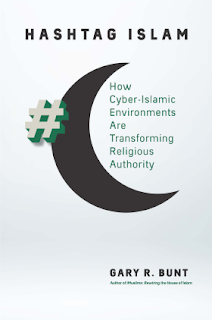 economy and innovation policy. He is the author of When Small States Make Big Leaps.
economy and innovation policy. He is the author of When Small States Make Big Leaps.Ornston applied the “Page 99 Test” to his new book, Good Governance Gone Bad: How Nordic Adaptability Leads to Excess, and reported the following:
By describing the startup scene in Finland, page 99 poses a puzzle: Why has Finland (and Sweden) emerged as a center for technology-based entrepreneurship, rivaling Silicon Valley in the (per capita adjusted) creation of billion dollar companies? In sharp contrast to Silicon Valley, postwar economic history was dominated by large, established companies. Even during the 1980s and 1990s, when Finland (and Sweden) pivoted from forestry and heavy industry to information technology, restructuring was driven by century-old conglomerates such as Nokia (and Ericsson) rather than new enterprises.Learn more about Good Governance Gone Bad at the Cornell University Press website.
The startup boom not only illustrates the enduring ability of the Nordic countries to reinvent themselves, but it also speaks to the underlying mechanisms behind this dynamism. Like the main case studies, the rise of heavy industry in postwar Sweden, Finland’s movement into mobile communications, and the financialization of Iceland, restructuring was not imposed by the state, but rather reflected the rapid diffusion of new business models within tight-knit social circles. In Finland, motivated students, inspired by a handful of high-profile successes such as Rovio and Supercell, used bottom-up initiatives such as the Aalto Entrepreneurial Society and the Slush conference, to capture the imagination of policymakers and institutional investors and transform Finnish society.
Page 99 misleads in one sense, though. In highlighting the success of these young entrepreneurs and the dynamism of the Nordic region, it obscures how these dense networks get societies into trouble. For example, the Nordic startup scene is currently supported by low interest rates and abundant risk capital. While more sustainable than the short-lived dot com boom of the past, it is unclear how it would weather a shift in financial markets. This is a recurring theme in the region. As my book title suggests, adaptability is an asset, but the rapid mobilization of resources around new business models can also lead to policy overshooting, overinvestment, and deep economic crises. If this darker and more vulnerable side of the Nordic model interests you, I encourage you to read further.
--Marshal Zeringue

















